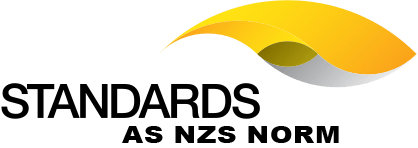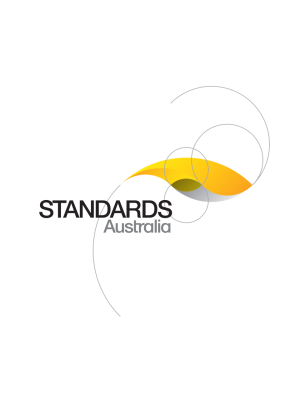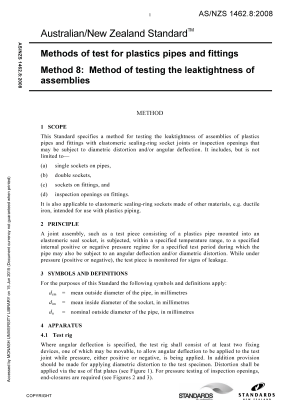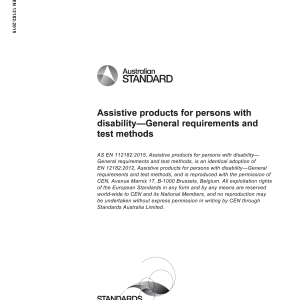🔍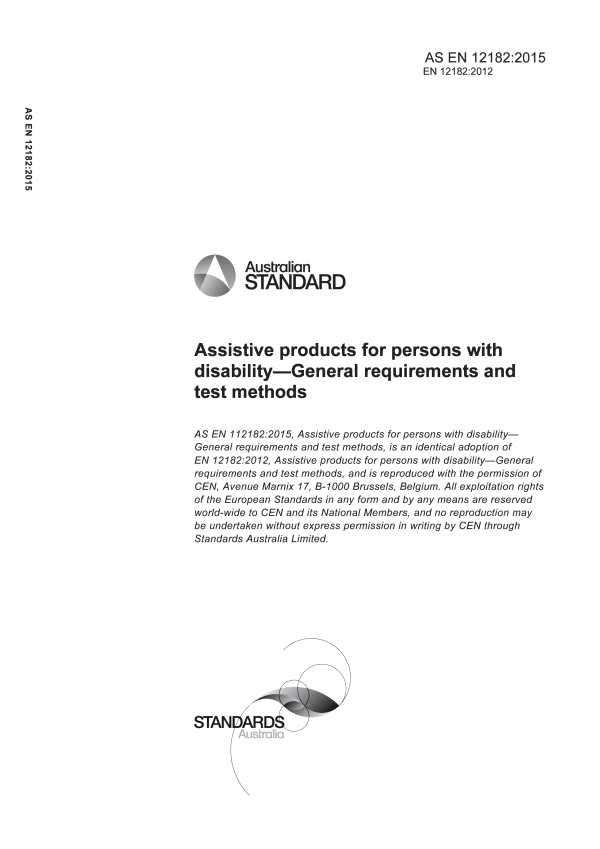

Purchase the full subscription package now and enjoy a 40% discount, along with free updates for future editions.
AS EN 12182:2015
$242.18
Assistive products for persons with disability — General requirements and test methods
Adopts EN12182:2012 to specify general requirements and test methods for assistive products for persons with a disability.
Table of contents
Header
About this publication
PREFACE
1 Scope
2 Normative references
3 Terms and definitions
4 General requirements
4.1 Risk analysis
4.2 Intended performance and technical documentation
4.3 Clinical evaluation and investigation
4.4 Assistive products that can be dismantled
4.5 Fasteners
4.6 Mass limits
4.7 Immobilising means
4.8 Design requirements in relation to persons with cognitive impairment
5 Materials
5.1 General
5.2 Flammability
5.2.1 General
5.2.2 Upholstered parts, mattresses, bed bases and bedding
5.2.3 Upholstered parts
5.2.4 Mattresses and bed bases
5.2.5 Bedding
5.2.6 Moulded parts
5.3 Biocompatibility and toxicity
5.4 Contaminants and residues
5.4.1 General
5.4.2 Substances which may leak from an assistive product in intended use and in fault conditions
5.5 Infection and microbiological contamination
5.5.1 Cleaning and disinfection
5.5.2 Animal tissue
5.6 Resistance to corrosion
6 Emitted sound and vibration
6.1 Noise and vibration
6.2 Sound levels and frequencies of audible warning devices
6.3 Feedback
7 Electromagnetic compatibility
7.1 General
7.2 Emissions
7.3 Immunity
7.4 Power frequency magnetic field immunity
8 Electrical safety
8.1 General
8.2 Electrical systems
8.3 Continuity of power supply
8.4 Battery powered assistive products
8.4.1 Battery housings
8.4.2 Connection
8.4.3 Charge level indicator
8.5 Circuit protection
8.6 Electronic programmable systems
8.7 Electrically heated blankets, pads and similar flexible heating appliances
8.8 Assistive products with skin contact electrodes
8.9 Ingress of liquids
9 Overflow, spillage, leakage, and ingress of liquids
9.1 Overflow
9.1.1 Requirements
9.1.2 Test method
9.2 Spillage
9.2.1 Requirements
9.2.2 Test method
9.3 Leakage
9.4 Ingress of liquids
9.4.1 Requirements
9.4.2 Test method
10 Surface temperature
11 Sterility
11.1 Sterility requirements
11.2 Sterilization processes
11.3 Maintenance of sterility in transit
12 Safety of moving parts
12.1 Squeezing
12.2 Mechanical wear
12.3 Emergency stopping functions
13 Prevention of traps for parts of the human body
13.1 Holes and clearances
13.2 V-shaped openings
14 Folding and adjusting mechanisms
14.1 General
14.2 Locking mechanisms
14.3 Guards
15 Carrying handles
15.1 General
15.2 Requirement
15.3 Test method
16 Assistive products which support or suspend users
16.1 General
16.2 Static forces
16.3 Dynamic forces
16.4 Requirements and test method for tips
16.4.1 General
16.4.2 Friction of tips
16.4.3 Durability of tips
17 Portable and mobile assistive products
18 Surfaces, corners, edges and protruding parts
19 Hand held assistive products
20 Small parts
21 Stability
22 Forces in soft tissues of the human body
23 Ergonomic principles
24 Requirements for information supplied by the manufacturer
24.1 General
24.2 Instructions for use
24.2.1 Pre-sale information
24.2.2 User information
24.2.3 Service information
24.3 Labelling
25 Packaging
26 Test report
Annex A
Annex B
B.5.2 Flammability
B.5.5.1 Cleaning and disinfection
B.5.5.2 Animal tissue
B.6.1 Noise and vibration
B.7.4 Power frequency magnetic field immunity
B.8.5 Circuit protection
B.9.4 Ingress of liquids
B.13.2 V-shaped openings
B.18 Surfaces, corners, edges and protruding parts
B.19 Hand held assistive products
B.20 Small parts
B.22 Forces in soft tissues of the human body
B.23 Ergonomic principles
B.25 Packaging
Annex C
C.1 Introduction
C.2 The concept of cognitive impairment
C.3 Important factors to be considered in the design process
C.3.1 General
C.3.2 Checklists
C.4 User information and user interface
C.4.1 General
C.4.2 Alternative format
C.4.3 Colour, contrast and lighting level
C.4.4 Complexity of information
C.4.5 Clear language in written or spoken information
C.4.6 Graphical symbols and illustrations
C.4.7 Slow pace of information presentation
C.5 Ease of handling
C.5.1 Controls
C.5.2 Duration of actions and timed responses
C.5.3 Logical process
C.5.4 Fail-safe
C.6 User participation
Annex D
D.1 Assesment of hazardous substances in assistive products for persons with a disability – general aspects
D.2 Hazardous substances in all materials or products
D.2.1 Substances of very high concern (SVHC): the European approach on chemicals
D.2.1.1 General
D.2.1.2 CMR chemicals
D.2.1.3 PBT and vPvB substances
D.2.1.4 Substances of equivalent concern
D.2.2 Recommendations
D.2.2.1 General
D.2.2.2 CMR chemicals
D.2.2.3 PBT and vPvB substances
D.2.2.4 Substances of equivalent concern
D.3 Hazardous substances in textiles
D.3.1 Relevant substances
D.3.2 Recommendations
D.4 Hazardous substances in plastic materials
D.4.1 Relevant substances
D.4.2 Recommendations
D.4.2.1 Substances based on lead, cadmium, mercury and their compounds or tin organic compounds
D.4.2.2 Organic halogenated compounds
D.4.2.3 Phthalates
D.5 Metals
D.5.1 Relevant substances
D.5.2 Recommendations
D.6 Wood
D.6.1 Relevant substances
D.6.2 Recommendations
Annex ZA
Bibliography
Cited references in this standard
Please select a variation to view its description.
| Published | 28/07/2015 |
|---|---|
| Pages | 56 |
Please select a variation to view its pdf.
